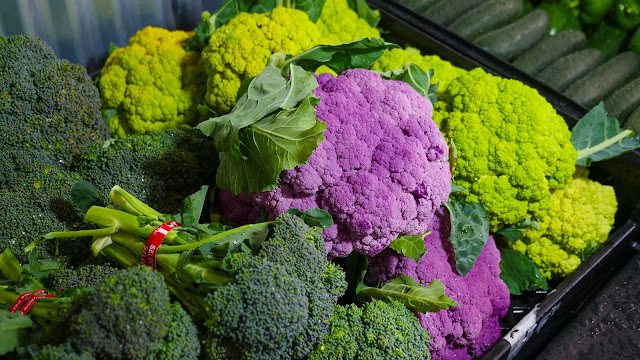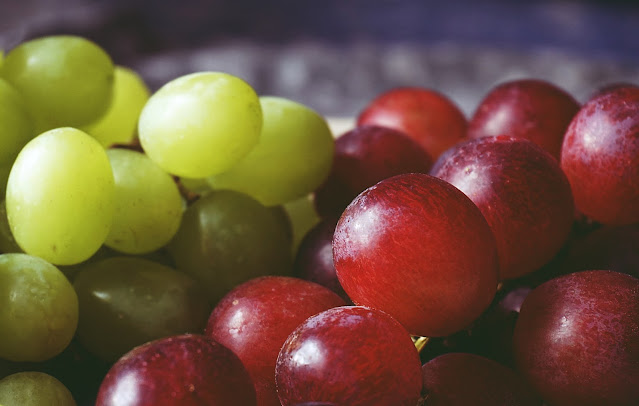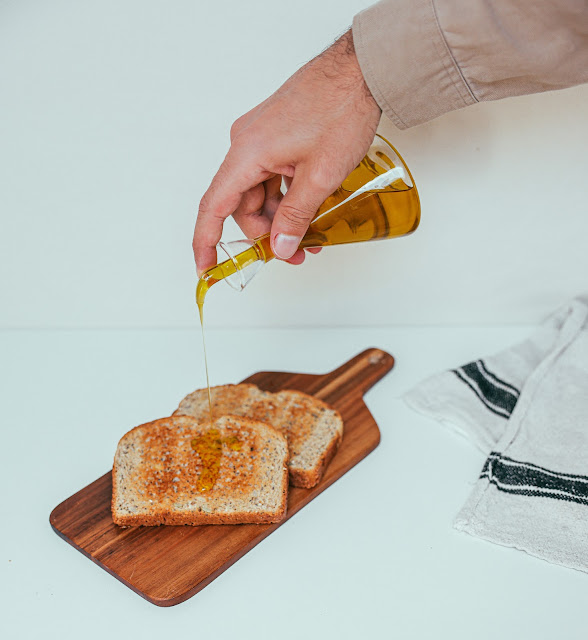ANATOMICAL POSITION OF LIVER.
The liver is found in the upper
right quadrant of the abdominal cavity, beneath the diaphragm and on top of the
stomach, intestines, and right kidney. The liver receives blood from two
separate sources, which are as follows:
The hepatic artery supplies
oxygenated blood. The hepatic portal vein delivers nutrient-rich blood.
The liver is divided into two
lobes. Both are composed of eight segments with 1,000 lobules (small lobes).
These lobules are linked to tiny ducts (tubes), which join to form the common
hepatic duct. The common bile duct transfers bile produced by liver cells to
the gallbladder and duodenum (the first part of the small intestine).
MAIN FUNCTIONS OF LIVER.
The liver controls most chemical
levels in the blood and excretes bile. This is helpful in the removal of waste
materials from the liver. The liver filters all blood that leaves the stomach
and intestines. The liver processes this blood, breaking down, balancing, and
creating nutrients, as well as metabolizing medicines into forms that are
easier for the rest of the body to use or are harmless.
The following are some of the
more well-known functions of Liver:
1. Bile
production, which aids in the removal of waste and the breakdown of fats in the
small intestine during digestion.
2. Production
of cholesterol and specific proteins to aid in the transport of fats throughout
the body.
3. Manufacturing
of specific proteins for blood plasma.
4. Conversion
of toxic ammonia to urea (urea is a byproduct of protein breakdown that is
eliminated in the urine)
5. Blood
amino acid levels, which are the building blocks of proteins, are regulated.
6. Hemoglobin
is processed to use its iron content (the liver stores iron).
7. Excess
glucose is turned into glycogen for storage (glycogen is capable of being
converted back to glucose for energy), and glucose is regulated and produced as
needed.
8. Removing
drugs and other dangerous chemicals from the blood
9. Controlling
blood clotting
10. Infection
resistance is achieved by producing immune system cells and eliminating
microorganisms from the bloodstream.
11. Clearance
of bilirubin from red blood cells as well. When bilirubin levels rise, the skin
and eyes turn yellow.
SIGNS OF LIVER DISEASE.
Liver illness does not usually
manifest as visible signs and symptoms. If liver disease symptoms do appear,
they may include:
Jaundice is characterized by
yellowish skin and eyes.
Pain and swelling in the abdomen.
Leg and ankle swelling.
Itching on the skin.
Urine color is dark.
The color of the stool is pale.
Chronic exhaustion.
vomiting or nausea.
Appetite loss.
Patients bruise easily.
ROLE OF DIET IN LIVER DISEASE.
Reducing your intake of animal protein may be one of the dietary changes for liver illness. This is going to help in limiting the accumulation of harmful waste products. Increasing your carbohydrate intake to be proportional to your protein intake. Fruits and vegetables are generally included in the diet for fatty liver disease. Plants high in fiber, such as legumes and whole grains. Limiting consumption of certain foods and beverages heavy in added sugar, salt, processed carbs, and saturated fat. Alcoholic beverages need to be avoided by Liver Disease Patients.
FOODS GOOD FOR LIVER DISEASE PATIENTS.
Because the liver oversees over500 crucial activities in your body, it is critical that you take good care of it. There is no specific food that promotes liver health, but a well-balanced diet can help keep your liver in good condition. This includes eating plenty of veggies, fruit, whole grains, fatty fish, and legumes.
1. CRUCIFEROUS VEGETABLES.
You're in luck if you like
broccoli. This cruciferous vegetable, like cauliflower, Brussels sprouts, and
mustard greens, is beneficial to the liver. They are high in fiber, which
benefits liver function. Furthermore, they contain antioxidants and
phytochemicals that may aid in the prevention of liver cancer.
GRAPES.
Grapes, like berries, are high in fiber and antioxidants. Grapes contain resveratrol, an antioxidant that may help prevent additional liver damage in people with NAFLD (Non-Alcoholic Fatty Liver Disease). According to research, people with NAFLD who take resveratrol supplements derived from grape extract may experience decreased inflammation. NAFLD progresses due to oxidative stress, although antioxidants from meals and supplements may help counteract this process.
1. BEANS, LENTILS, CHICKPEAS.
The Healthcare Professionals
suggest cutting back on saturated fat and red meat in your diet. One fantastic
approach to achieve this is to substitute beans, lentils, and chickpeas for red
meat on occasion. These legumes are low in saturated fat and high in fiber,
which is an excellent combination for liver health.
1. BERRIES.
Blueberries, strawberries, and
raspberries are high in fiber and should be included in your meals and snacks.
Berries are also high in antioxidants, such as anthocyanins. Berry antioxidants
have been associated with decreased liver damage in studies in test tubes and
on animals. Antioxidants can help in the slowing of the growth of malignant
liver cells.
1. NUTS.
Nuts are an excellent addition to
your diet since they contain plenty of healthy unsaturated fats. A recent study
discovered that incorporating 28 grammes of walnuts into a daily Mediterranean
diet may lower your chance of getting NAFLD. Another study found that eating
more nuts has been linked with a lower incidence of NAFLD, especially among
men.
1. COFFEE.
Coffee is beneficial for your
liver, but it performs best when you don't add too much sugar, because too much
sugar is detrimental for your liver. Coffee has anti-inflammatory and
antioxidant qualities, and it appears that both decaf and caffeinated coffee
are healthy. Diterpenes in coffee have been shown in studies to assist in
detoxification, which can be useful for persons with fibrosis of the liver and
cirrhotic scarring.
1. FATTY FISH.
Oily or fatty fish, such as salmon and trout, are high in
omega-3 fat. NAFLD is linked to diets that are excessively high in omega-6 fats
and lacking in omega-3 fats, thus eating more oily fish can help balance this
out. Omega-3 fatty acids may help to halt the progression of NAFLD.
1. GREEN TEA.
Green tea includes bioactive
components that have antioxidant and anti-inflammatory properties. According to
research, several chemicals, particularly catechins, can also help reduce the
risk of NAFLD. Green tea catechins are also helpful in the prevention of liver
cancer. While green tea is beneficial, it should be noted that excessive
consumption of green tea supplements has been associated with liver damage.
1. TURMERIC.
Nonalcoholic fatty liver disease
(NAFLD) is characterized by inflammation and fat accumulation in the liver.
Even if many individuals with fatty liver have no symptoms at first, this can
have a long-term impact on liver function and overall health. NAFLD occurs in
the absence of high alcohol consumption. Certain conditions, such as type 2
diabetes, may put you at greater risk. As many as 75% of obese people are at
risk of developing NAFLD.
Several studies suggest that
turmeric, or the substance found in it called curcumin, may be useful in the
treatment of nonalcoholic fatty liver disease. Turmeric may help reduce
inflammation, which is a common sign of NAFLD. Lifestyle elements such as
retaining a healthy body weight, on the other hand, may help to prevent NAFLD.
1. AVOCADOS.
Avocados are another example of a
liver-friendly food. They contain special compounds that decrease and slow down
liver damage and are high in healthy fats. Avocados are high in glutathione, a
substance that helps in the removal of hazardous toxins from the body.
1. BEETROOT.
Beetroot juice has long been utilized
as a solution to stimulate liver enzymes and enhance bile production, and
this helps in the detoxification function of the liver. It's high in betalains
and other substances which have been demonstrated to reduce inflammation,
protect against oxidative stress, and lower the risk of liver damage.
1. EXTRA VIRGIN OLIVE OIL.
Nonalcoholic fatty liver disease,
which is characterized by abnormal fat deposition in the liver, is a major
cause of chronic liver disease. It has also been associated with type 2
diabetes and cardiovascular disease.
Olives are high in vitamin E and
antioxidants, which are both beneficial to the liver. Olive oil increases your
good cholesterol levels, which protects your liver from fatty liver disease. Extra
virgin olive oil and its related compounds promote liver health and
protect hepatic cells from oxidative stress.
1. GARLIC.
Selenium, a mineral found in
garlic, can help cleanse the liver. It can activate liver enzymes, causing your
body to naturally wash out the harmful toxins. This superfood can cleanse
the arteries and support in the removal of liver toxins. Black garlic's
organosulfur content and flavonoid component are antiglycation and powerful
antioxidants that can heal liver cells by enhancing the activity of antioxidant
enzymes such as catalase, superoxide dismutase, and glutathione peroxidase. Garlic
contains allicin, an antibacterial and antifungal compound. Garlic is thought
to detoxify the liver and digestive tract. To gain the benefits, one can
incorporate garlic into their daily diet or consume 1-2 bulbs of raw garlic on
a regular basis.
1. GRAPEFRUIT.
Grapefruit provides antioxidants that protect the liver naturally. Grapefruit has two major antioxidants: naringenin and naringin. Grapefruit has been shown to have two protective effects: decreasing inflammation and protecting cells. Grapefruit can, however, interfere with some drugs, so talk to your doctor if you have any questions.
PRICKLY PEAR.
The prickly pear (Opuntia
ficus-indica) cactus is a popular edible cactus. The fruit and its juice are
widely consumed. With its anti-inflammatory and antioxidant characteristics,
prickly pear may also protect the liver from alcohol damage. More human trials
are required, particularly those that use prickly pear fruit and juice instead
of extract.
1 OATMEAL
Oatmeal is a simple method to
increase fiber in your diet. Fiber is a significant digestive help and the
specific fibers found in oats may be especially beneficial to the liver.
Beta-glucans are substances found in oats and muesli. Oat beta-glucans appear
to help decrease the amount of fat accumulated in the liver in mice,
potentially protecting the liver. However, more clinical research is required
to validate this positive impact in humans. If you want to include oats or
muesli in your diet, search for whole oats or steel-cut oats rather than
instant oats. Instant oats may contain fillers like wheat or sugars that aren't
as good for you.
1. CARROTS.
Carrots can be helpful to the
liver due to the presence of beta-carotene and plant flavonoids. Both
abovementioned substances promote liver function and prevent toxicity from
taking over the liver. To ingest carrots for the purpose of improving liver
function, make carrot juice and drink it.
1. FIGS.
Figs, which are commonly used in
both Ayurvedic and Unani practice, are a wonderful natural way to keep your
liver healthy. They have been shown to speed up healing and help the liver stay
healthy. Because of their high fiber content and natural sugars, figs can be
useful to a fatty liver. The natural sugars present in figs can help manage
blood sugar levels and prevent the liver from keeping excess glucose as fat.
Furthermore, figs contain antioxidants and anti-inflammatory chemicals that can
help reduce inflammation and protect the liver from harm.
1. LEMON.
Lemon juice contains chemicals
such as d-limonene, which have been found to help the liver's natural
detoxifying activities. These substances may aid in the breakdown of toxins and
their removal from the body, supporting a healthier liver. Lemons are high in
antioxidants, especially vitamin C, which helps to reduce oxidative stress
while shielding liver cells from free radical damage. Lemon juice may benefit
liver function and general well-being by neutralizing these toxic chemicals. Maintaining
healthy liver function requires adequate fluids. When lemon juice is mixed with
water, it can enhance fluid intake and promote hydration, both of which are
necessary for the liver to operate properly. Furthermore, the inherent acidity
of lemons may encourage the formation of digestive fluids, which helps with
digestion and may indirectly enhance liver function.
1. WATERMELON.
Watermelon has a high-water content and is great for hydration. It also contains a lot of natural sugars. The high content of vitamin C can help fight inflammation and function as an antioxidant, which is necessary for proper metabolic function. It contains potassium, which helps in the proper functioning of the nerves and muscles. As a result, it also guarantees that the liver functions properly. Low potassium levels are also linked to the development of non-alcoholic fatty liver disease (NAFLD). Watermelon also includes lycopene, a carotenoid with anti-inflammatory characteristics that plays an important role in liver protection.
PAPAYAS.
The key contributors to the
pathophysiology of NAFLD (NON-ALCOHOLIC FATTY LIVER DISEASE) are oxidative
stress and inflammation. Many natural compounds high in polyphenols and with
high antioxidant activity have been investigated for their potential benefits
in the treatment of NAFLD. Papaya is a major dietary source of carotenoids such
as -carotene and lycopene. Carotenoids, which are potent antioxidants from
diet, are mostly stored in the liver, and this substance may help scavenge the
effects of oxidative stress created in the liver. By decreasing the
overproduction and activation of proinflammatory cytokines produced in high
fat-induced hepatic inflammation tissue, papaya can diminish liver
inflammation.
GENERAL PRECAUTIONS/LIFESTYLE CHANGES TO KEEP LIVER HEALTHY.
Exercise daily and maintain a healthy weight, don’t use medicines without the doctor’s prescription, especially don’t overdo the Paracetamol or Acetaminophen commonly found in many OTC Cold and Flu Medicines. Avoid Alcohol altogether if possible or drink in moderation, get vaccinated against Hepatitis A & B, watch out for needlestick injuries, avoid inhaling toxic chemicals in cleaning products, spray cans, insecticides and other household items, wash your hands with soap and warm water before preparing food, after using the bath room and changing the baby diapers, eat rainbow vegetables ranging in different colors, avoid herbal liver remedies like colloidal silver, check on supplements containing pyrrolizidine alkaloids like groomwell, borage, comfrey, practice safe sex.
THE BOTTOM LINE.
A healthy liver is crucial for your overall well-being, and a balanced diet rich in fiber and anti-inflammatory foods will help maintain your liver functioning effectively. Eat an abundance of berries, veggies, beans, nuts, and entire grains. Coffee and green tea are excellent additions to a healthy diet since they promote liver health.
YOUTUBE LINK:



.jpg)


.jpg)









.jpg)


.jpg)




.jpg)




0 Comments